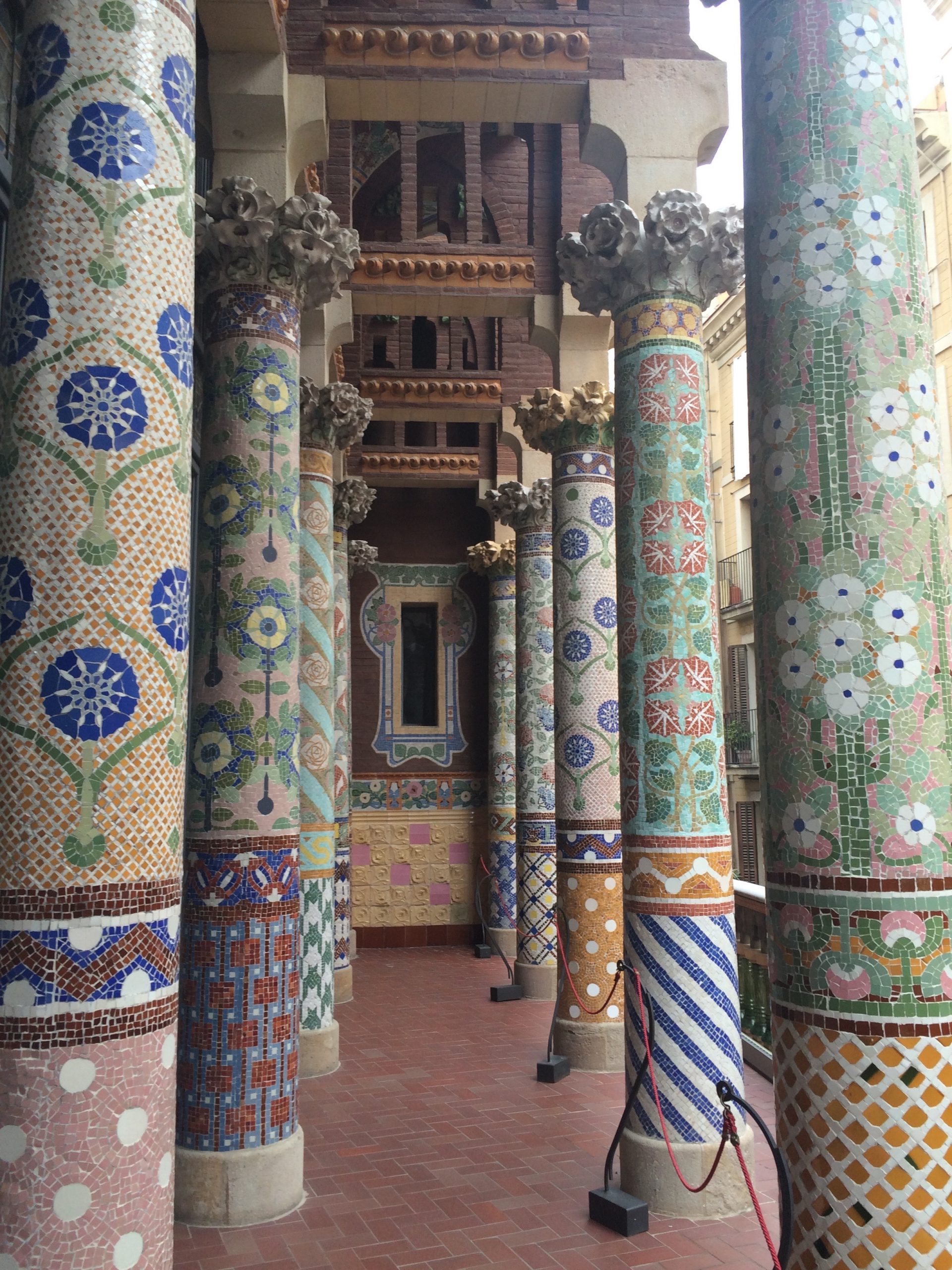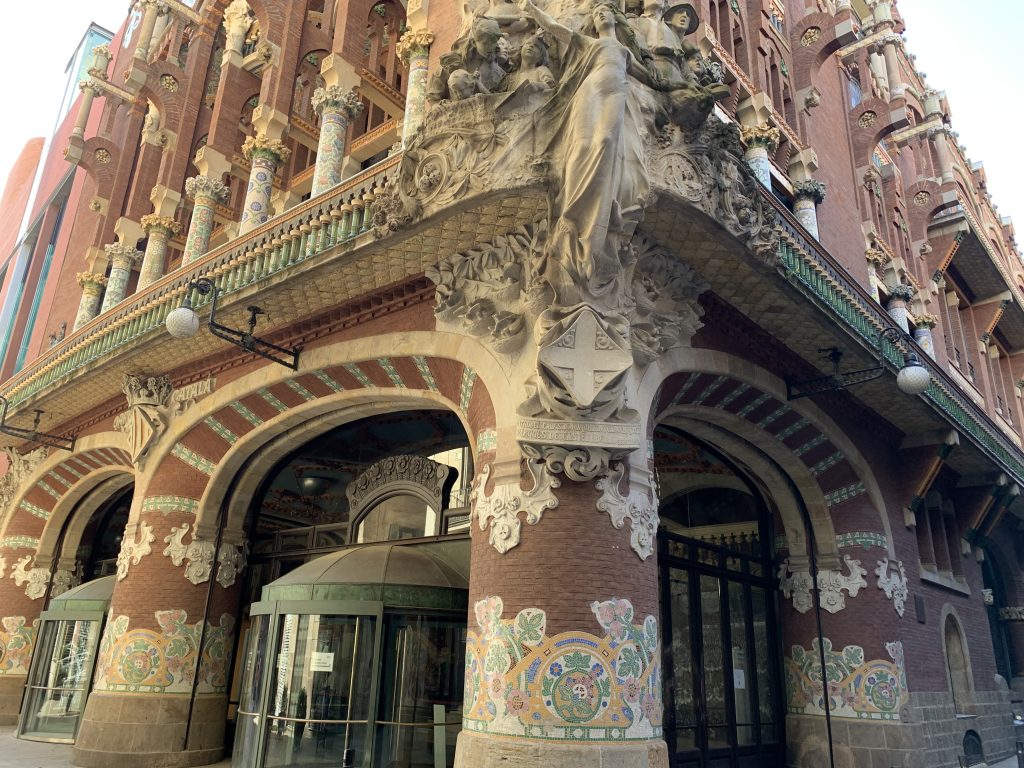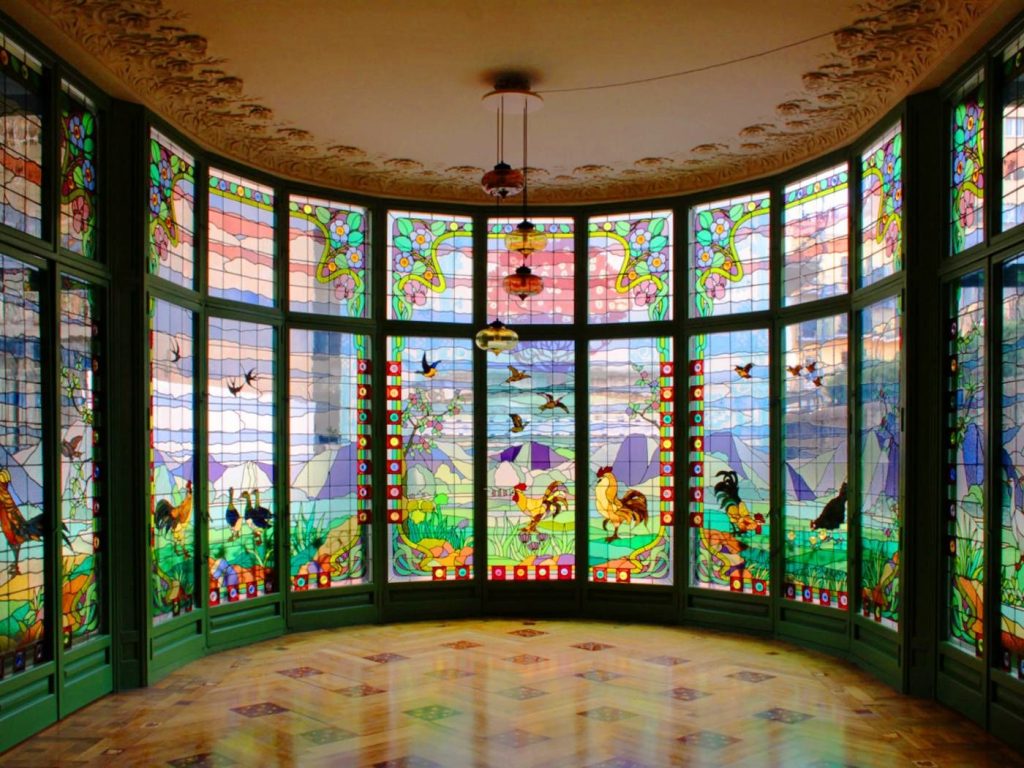
Between the end of the 19th century and the start of the 20th century, Modernism style ( Liberty style or Art Nouveau style) transformed the city of Barcelona. This period of industrial revolution and economic recovery in Catalonia saw wealthy families eager to commission custom-designed new homes from famous architects.. With no shortage of money, talent, or skilled craftsmen, the result is a unique cityscape. As your expert Barcelona tour guide, I will show you something you can see only here: all the facades are different; you can’t find any two houses that are alike.
Must-See Modernist Masterpieces in Barcelona
The list of modernist jewels is long, but a few highlights include Saint Paul’s Hospital, the Palau de la Música Catalana, and Casa Lleó i Morera (three wonderful works by architect Lluís Domènech i Montaner). Other essential stops are the Arc de Triomf, Casa Amatller, Els Quatre Gats café, and the Boqueria market.


Saint Paul’s Hospital: A Barcelona Tour Highlight
This masterpiece of Catalan Art Nouveau, built between 1902 and 1930, is a city within a city. It was created by the eminent Catalan architect Lluís Domènech i Montaner, a father of the Modernist style who headed the Barcelona School of Architecture for 20 years.

History of the construction
At the end of the 19th century, Barcelona needed a modern hospital. After several study trips to Europe, Domènech i Montaner designed a project that exceeded the best hospitals of the time. He envisioned a complex of 48 specialized pavilions, including a surgical department, all connected by an underground network for moving equipment, personnel, and patients. The surgical pavilion was in use until the 1960s and was the site of Spain’s first heart transplant.
Healing Through Beauty
The core idea was to heal not only through medicine but also through beauty, light, and color. The complex featured a central avenue planted with trees and 145 square meters of gardens per patient. All buildings are made of red brick and decorated with colorful mosaics and ceramics, which were both beautiful and met strict hygiene standards. The administration building’s facade resembles a monumental altarpiece, adorned with sculptures by the best Catalan masters of the time.
A Story of Charity
The hospital was made possible by benefactors. The Catalan banker and philanthropist Pau Gil bequeathed half his fortune for its construction. The mosaics in the administration pavilion represent the coats of arms of Barcelona and Paris, as well as Gil’s bank emblem, alongside the inscription: “Happiness in honesty.” Later, donations from wealthy local families allowed construction to be completed. Upon its 1930 inauguration, King Alfonso XIII of Spain declared, “You Catalans are like that… you build palace-hospitals for the poor.”
Saint Paul’s Today: A UNESCO World Heritage Site
In 1997, the hospital complex was declared a UNESCO World Heritage Site. The restored pavilions now house research labs, host conferences, and welcome visitors. It is also home to one of the world’s richest hospital archives, with plans for a future museum. The hospital itself has moved to a new, modern building.
Book Your Barcelona Tour Guide
A guided tour of Saint Paul’s Hospital and the Palau de la Música is a must on any visit to Barcelona. With me, licensed Barcelona tour guide, as your tour guide, you will also avoid queues at the entrance!